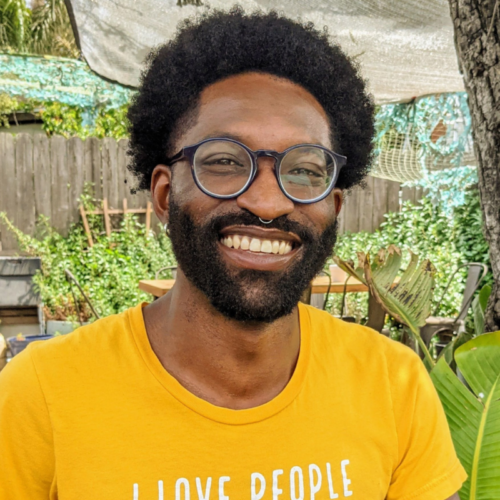
In the News
Addressing Meth as Growing Public Health Crisis in Oakland
- The Oaklandside
-
Programs
CA Bridge

This is the first article in a three-part series examining the realities of methamphetamine use in Oakland and efforts to address this growing public health crisis.
“In an older wing of Oakland’s historic Wilma Chan Highland Hospital Campus, a patient waits on an examination table. He is there to receive a monthly dose of Sublocade, the brand name for the injectable form of buprenorphine, a medicine that helps people suffering from opioid addiction curb cravings and avoid withdrawal symptoms while trying to get clean.
He twitches only slightly when Dr. Monish Ullal, a physician at the Alameda Health System’s innovative Bridge Clinic for substance use disorder, inserts the needle into his abdomen. He prefers to come to the clinic on Wednesdays, when Ullal is on the floor, because of his gentle touch.
“It really helps with the cravings,” says the patient, who has been clean for 10 months. “Except for some,” he clarifies. “Except for meth.”
Methamphetamine, a highly addictive stimulant drug, is on the rise in Oakland. In both its quantity on the streets and the number of people who die from using it, meth comes second only to opioids (including fentanyl and heroin) in Alameda County. But unlike fentanyl and other opioids, which have buprenorphine as a medicated treatment option, there isn’t yet a drug on the market that can treat patients’ meth addictions.
Over the past five years, meth has become more available, potent, and cheap than ever before. As a result, the number of people who use meth has soared, making the drug a serious public health problem.
Dr. Erik Anderson, an emergency medicine physician at Oakland’s Highland Hospital, described fentanyl and meth as by far the most harmful illicit drugs impacting Oakland today. Originally from the Midwest, Anderson specializes in addiction medicine. He said there is an unmet need for substance use disorder treatment across the country.
During his years at Highland, Anderson has seen meth become more prevalent and dangerous in ways that mirror the trajectory of the opioid crisis.
“People have been using meth for a while, including in the East Bay, but it has become even more common,” he said, painting a picture of how Oakland’s drug scene has changed over time. “It’s not an opioid, but it has seen increasing mortality, hospital visits, and emergency department visits associated with its use.”
Because of the drug’s low cost and stimulating effects, meth usage is especially prevalent in Oakland’s unhoused population. Charles Hawthorne, who has worked in harm reduction for seven years as an educator and program manager, runs training sessions for addiction professionals that emphasize how substances, including meth, have utility for the people that use them.
“Meth helps people stay awake, navigate pain, have less feelings of hunger, and stay safe on the streets,” said Hawthorne, who works as an equity and harm reduction project manager at CA Bridge, a state-wide addiction treatment and hospital training program based in Oakland that grew out of the work done at Highland. For people experiencing homelessness, the stimulating effects of meth can help them survive the challenging realities of living unhoused.

If you’re a person who is living on the streets, every time you fall asleep, you risk being robbed, assaulted, or killed.Charles Hawthorne, MPH
Equity & Harm Reduction Project Manager, CA Bridge, Public Health Institute
“It just looks like people dying”
The methamphetamine crisis is felt in ways that extend far beyond the number of people who overdose. Meth addiction often coincides with mental health problems and can also induce psychosis in individuals, leading to long-term psychological harm. It also causes a range of serious chronic health problems, including damage to people’s hearts and brains, leading to an increased risk of heart attacks and strokes. Liver, kidney, lung, skin, and teeth damage are also common. What’s more, addiction can be economically and socially harmful for people who use and their families, and racial and economic disparities amplify the meth crisis for certain communities.”

One thing that we hear all the time in California and nationally is ‘we don’t have an opioid problem, we have a methamphetamine problem.’ This is a constant conversation.Sarah Windels
Founding member of PHI’s CA Bridge
Click on the link below to read the full article.
Originally published by The Oaklandside
More Updates
Work With Us
You change the world. We do the rest. Explore fiscal sponsorship at PHI.
Support Us
Together, we can accelerate our response to public health’s most critical issues.
Find Employment
Begin your career at the Public Health Institute.



